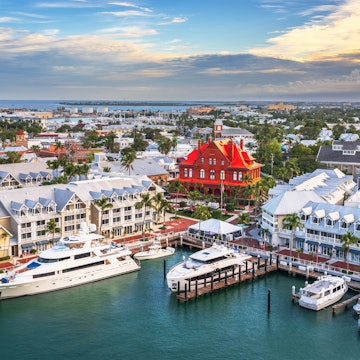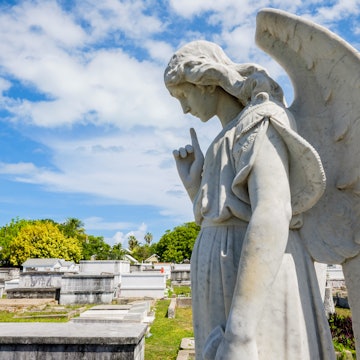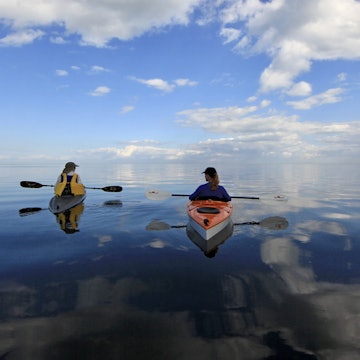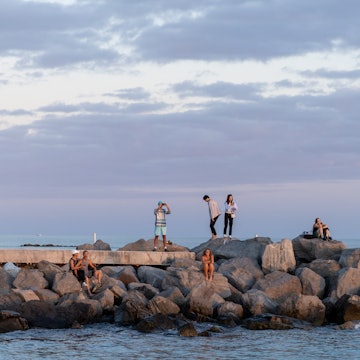
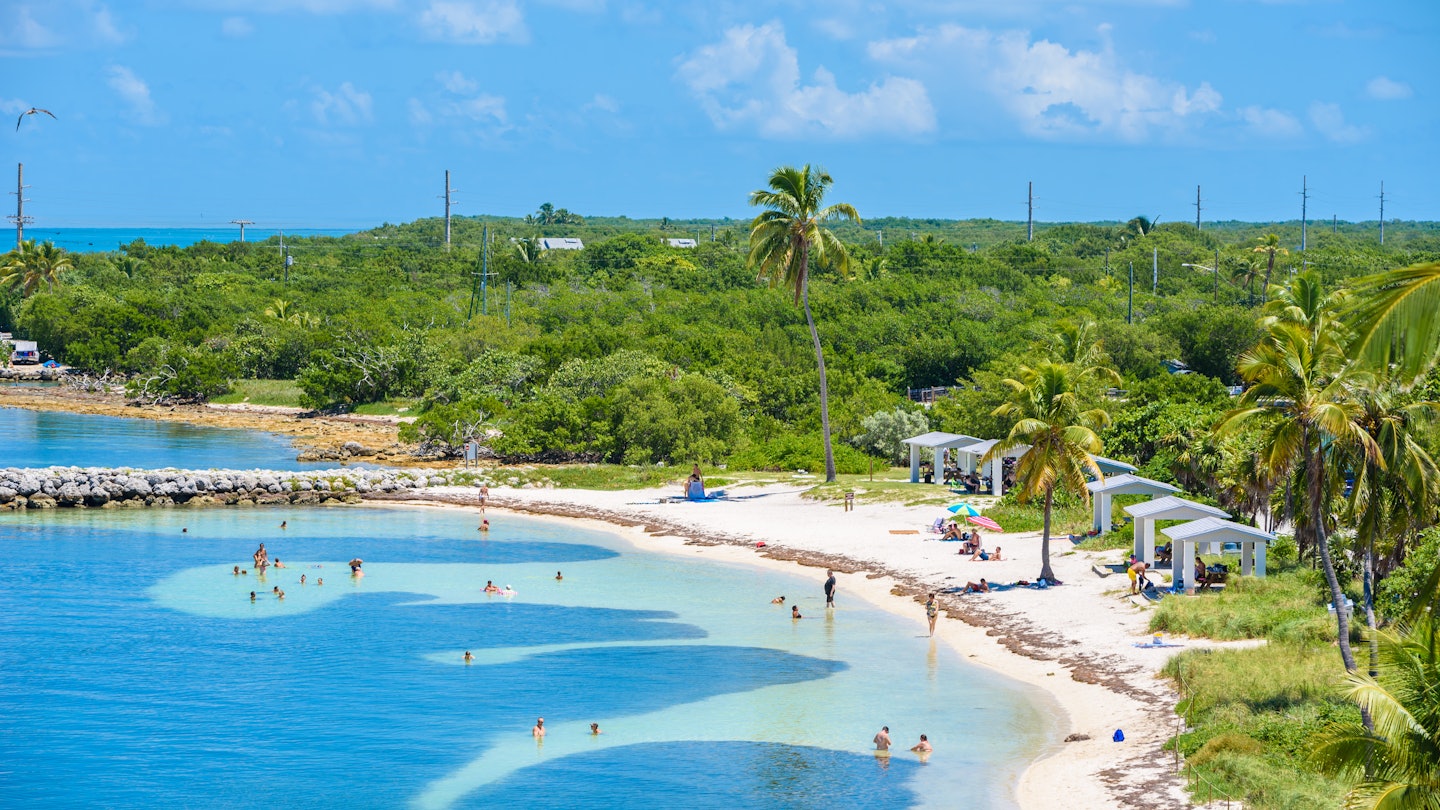
Calusa Beach at Bahia Honda State Park in the Florida Keys. Simon Dannhauer/Shutterstock
For those craving a road trip that feels like a sunny exhale, buckle up and set your sights south on the Overseas Highway.
Spanning more than 100 miles from Key Largo to Key West, the Florida Keys are a tropical dream consisting of conch fritters, coral reefs, six-toed cats, and enough quirky pizzazz to keep Hemingway reincarnating.
But this isn’t just a beach-and-booze chain of islands, though you’ll find both at every turn. The Keys equate to a rare blend of nature, history, and unapologetic peculiarity, from underwater parks to presidential retreats.
Whether you're chasing reef dives, lazy paddles, spooky legends or the sunset conga line at Mallory Square, these are the 16 best ways to soak up the character-rich Keys.
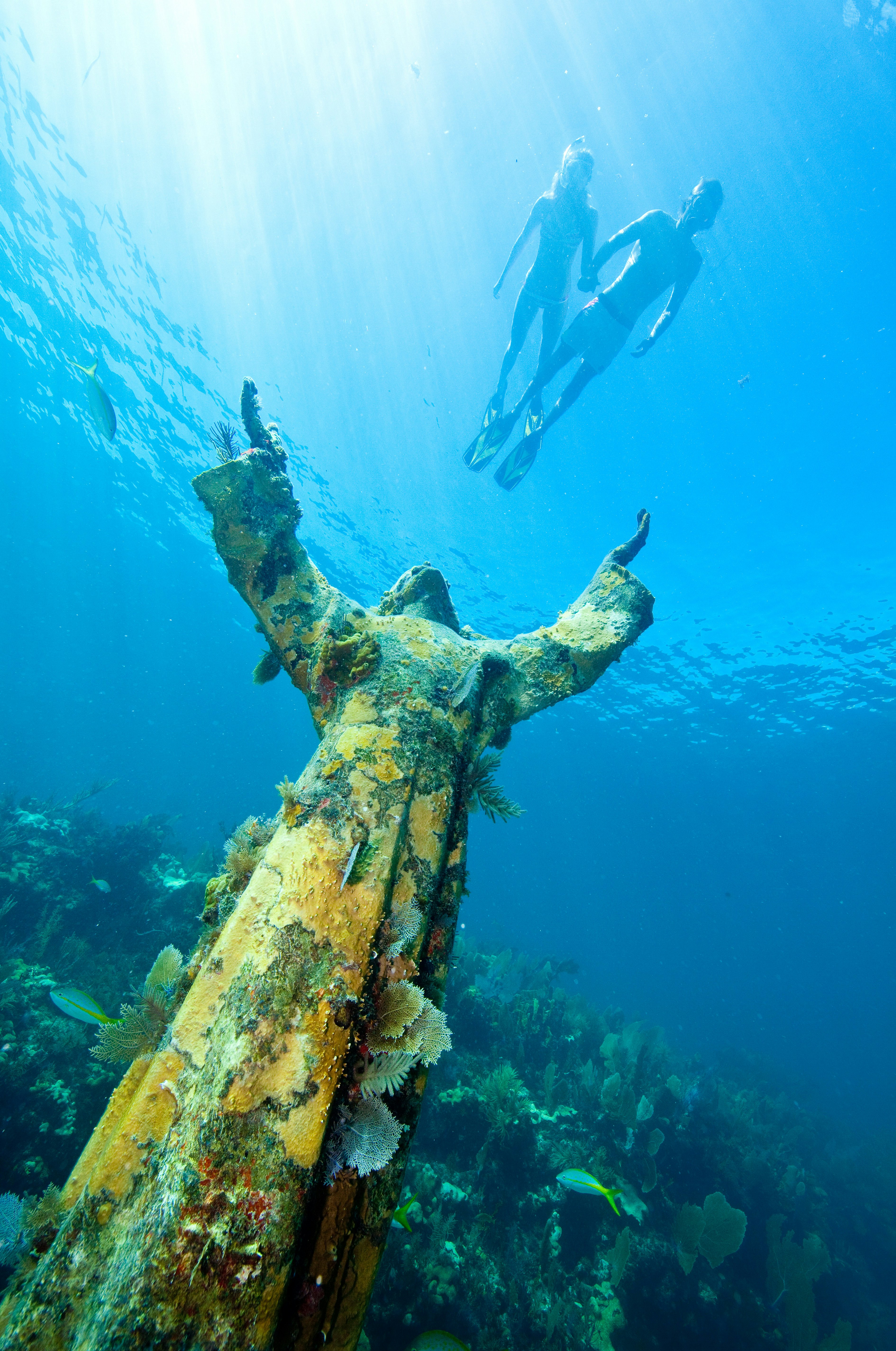
1. Dive into the depths at John Pennekamp Coral Reef State Park
As America’s first underwater state park, John Pennekamp Coral Reef State Park in Key Largo is as multifaceted as it gets for marine lovers.
The park sprawls across 70 sq miles of protected Atlantic waters, and although you could be content with trails and a mini-aquarium at the visitor center, the real magic lives just beneath the surface.
Snorkel and glass-bottom boat tours glide over living coral reefs teeming with angelfish, parrotfish, sea turtles and, yes, barracudas. Don’t miss the eerie underwater Christ of the Abyss statue, a bronze sculpture nestled in a coral basin six miles offshore.
Planning tip: Reserve snorkel, scuba, or glass-bottom boat tours in advance via Pennekamp’s website. Spots fill fast, especially on weekends.
2. Visit injured avians at the Laura Quinn Wild Bird Sanctuary
On your way south from Key Largo, pull over for a quick stroll through the Laura Quinn Wild Bird Sanctuary. Injured herons, owls, pelicans and cormorants are among the full-time residents of this small coastal refuge.
A winding on-site boardwalk leads you past enclosures and knowledgeable volunteers are often on hand to share each bird’s backstory.
Planning tip: Admission is donation-based ($10 is suggested). Morning visits offer the best birdwatching and fewer mosquitoes.

3. Feed the tarpon and kayak through mangroves at Robbie’s Marina
Feeding massive, prehistoric-looking tarpon at Islamorada’s Robbie’s Marina is a Florida Keys rite of passage. These dog-sized fish leap from the water to snatch bait from tourists’ hands.
Beyond the frenzy, Robbie’s offers boat rentals, seaside shopping, and tranquil kayak routes through mangroves and hidden lagoons. Adventurous paddlers can reach Indian Key, once the original seat of Dade County, or Lignumvitae Key, a forested time capsule with century-old ruins.
Planning tip: Kayaks and snorkeling trips book out on weekends. Secure your spot early at The Kayak Shack.
4. Stroll Crane Point Hammock reserve
Crane Point Hammock in Marathon, is a 63-acre reserve with tropical hardwood forest, butterfly meadows, mangroves and even pirate history.
Self-guided boardwalk trails wind through palm hammocks and past the historic Adderley House, built in the early 1900s by Bahamian immigrants. This is a great pitstop for nature lovers and families alike.
Detour: Nearby Sombrero Beach is ideal for a post-hike picnic or swim, complete with volleyball courts and shaded tables.
5. Spend a day at the Florida Keys Aquarium Encounters
Commune with sea life at this interactive aquarium in Marathon. The guided tour explains Florida’s marine ecosystems. Think tarpon basins, touch tanks with horseshoe crabs and queen conch, and a 200,000-gallon coral reef tank.
Visitors can snorkel with tropical fish and even feed sharks (safely, from the other side of acrylic glass).
Some visitors have expressed concerns about the welfare of the animals, fears of overfeeding and the impact touch tanks have on the animals.
Detour: Just down the road, the Turtle Hospital is a heartwarming stop where rescued sea turtles are nursed back to health.
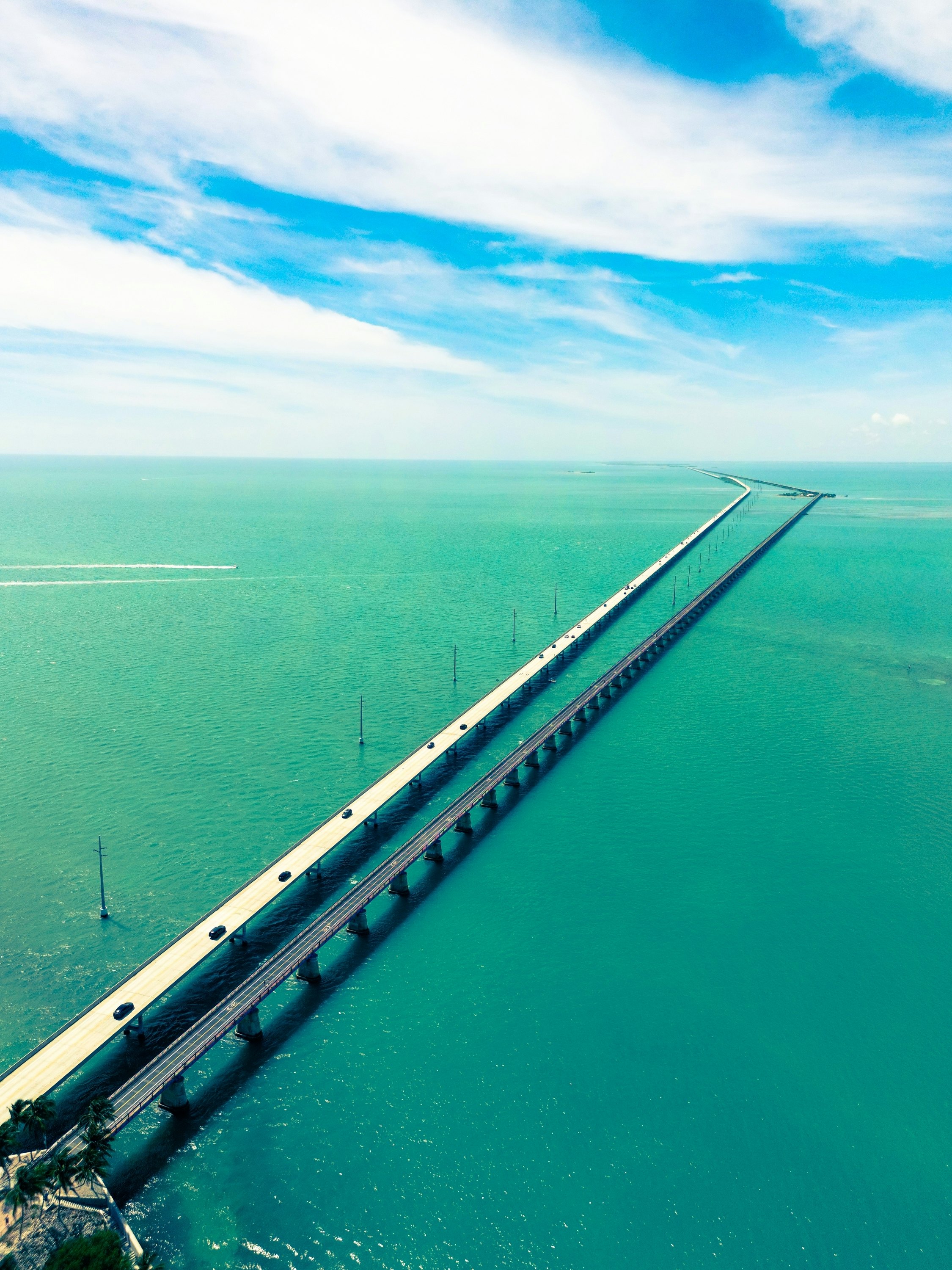
6. Walk, bike or choo-choo to Pigeon Key on the Old Seven Mile Bridge
The modern Seven Mile Bridge is a scenic marvel in its own right, but the adjacent Old Seven Mile Bridge offers something more personal – a peaceful stroll or bike ride out to historic Pigeon Key.
Once a work camp for railroad laborers, the island now hosts restored buildings and snorkeling spots. You can reach it by foot, bike, or a kitschy mini train that departs from a visitor center on the mainland.
Local tip: Keep an eye out for Fred the Tree, a lone Aussie pine improbably growing out of the old bridge. Locals decorate the tree during the holidays.
7. Birdwatch and relax at Bahia Honda State Park
Bahia Honda State Park is a double threat: it’s one of the Keys’ best beaches and best birding destinations. Bring your binoculars and look for white-crowned pigeons, wood warblers and great white herons.
The park’s Old Bahia Honda Rail Bridge makes a perfect perch for avian spotting and panoramic beachy views. Trails, kayaks and reef-snorkeling tours round out a full day of nature-focused fun.
Planning tip: Sandspur Beach can get “seaweedy” but remains one of the most natural stretch of shoreline in the Keys.

8. Spot adorable Key deer on No Name Key
On sleepy No Name Key, speed limits are suggestions for deer. Key deer, that is. These pint-size, endangered relatives of the white-tailed deer are often spotted in front yards, back roads, and even along hiking paths.
Drive slowly and keep your camera ready. Trails here are low-key and often unsigned, adding to the sense of exploration.
Detour: Refuel with fish dip and a frosty beer at the dollar-bill-plastered No Name Pub.
9. Treasure hunt at the Big Pine Flea Market
More than just a stop for kitschy souvenirs, Big Pine Flea Market is a peek into local life. Open Saturdays and Sundays, this gathering of vendors slings everything from handmade wood carvings and wind chimes to fresh fish fry and sunglasses that evoke true “island time.”
It’s also a great place to grab supplies before venturing further south.
Detour: The nearby Blue Hole is the Keys’ largest freshwater pond with gators, turtles, and an unexpected piney backdrop.
10. Taste tropical delights at Grimal Grove
The mainland’s first breadfruit farm hides in plain sight on Big Pine Key. At Grimal Grove, you’ll walk through a funky orchard teeming with fruit like jackfruit, canistel and sapodilla while learning about sustainable farming.
The backstory of the original founder, Adolf Grimal, a reclusive inventor, adds a layer of eccentric charm.
Planning tip: Tours typically run three times a day. Check the Grimal Grove website for seasonal availability and book ahead.
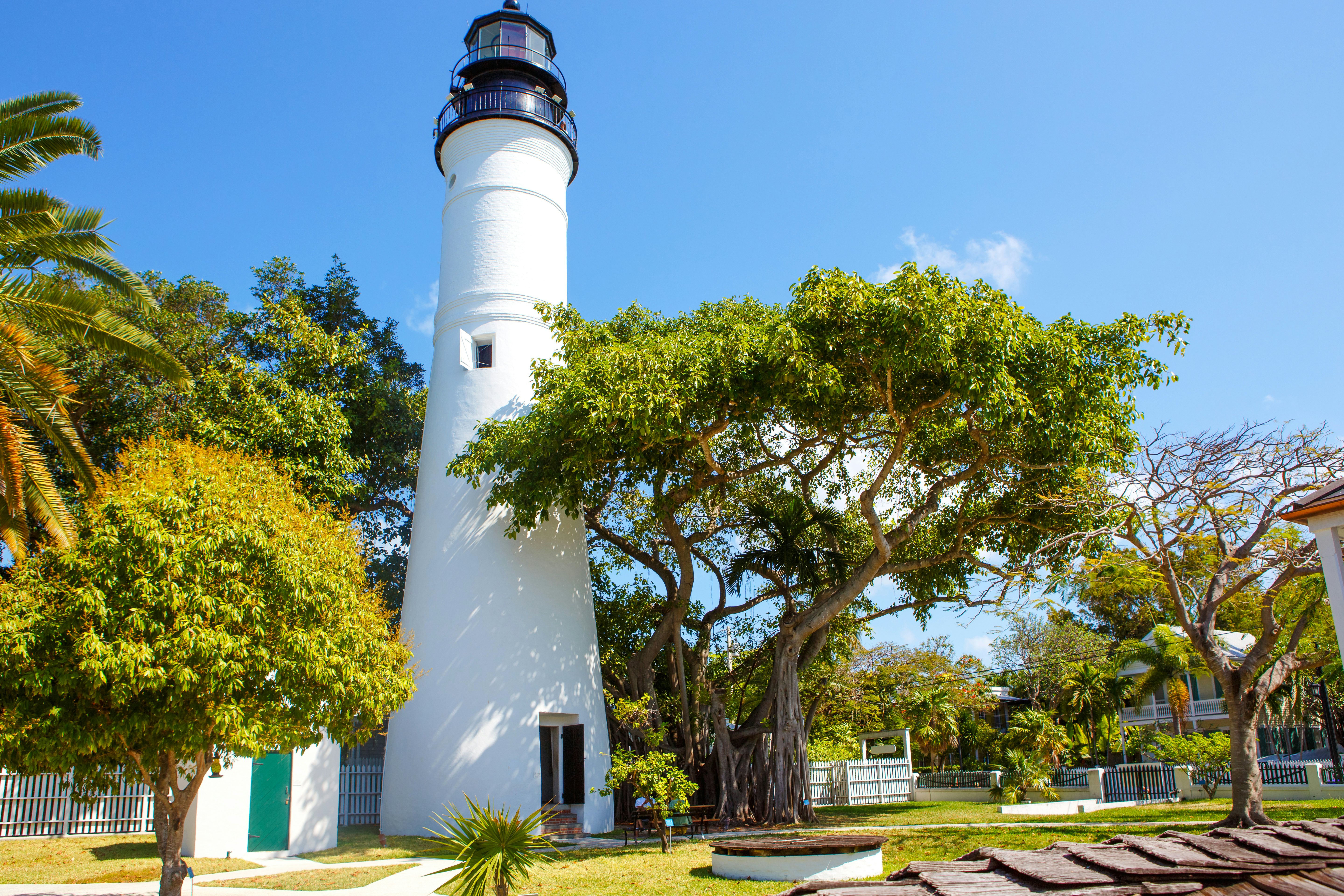
11. Get spooked (or inspired) at Key West’s museums
Key West’s past is as colorful as its sunsets. For a dose of ghostly lore, head to Fort East Martello Museum to meet Robert the Doll, said to be haunted and allegedly cursed.
If you prefer treasure over terror, the Mel Fisher Maritime Museum houses recovered shipwreck gold and powerful artifacts from the once slave ship Henrietta Marie.
Planning tip: Consider the Key West Culture Pass to bundle admission to multiple sites like the Key West Lighthouse and Tennessee Williams Museum.
12. Tour President Truman’s Little White House
Who says US presidents don’t know how to vacation right? Harry Truman made Key West his presidential hideaway, hosting high-level meetings and fishing junkets from the 1890s-era Little White House.
Guided tours here offer deep dives into Cold War politics and mid-century tropical leisure, all from the air-conditioned comfort of Truman’s former digs.
Planning tip: Try to visit early in the day. Tours are guided-only here and they fill up during cruise ship hours.
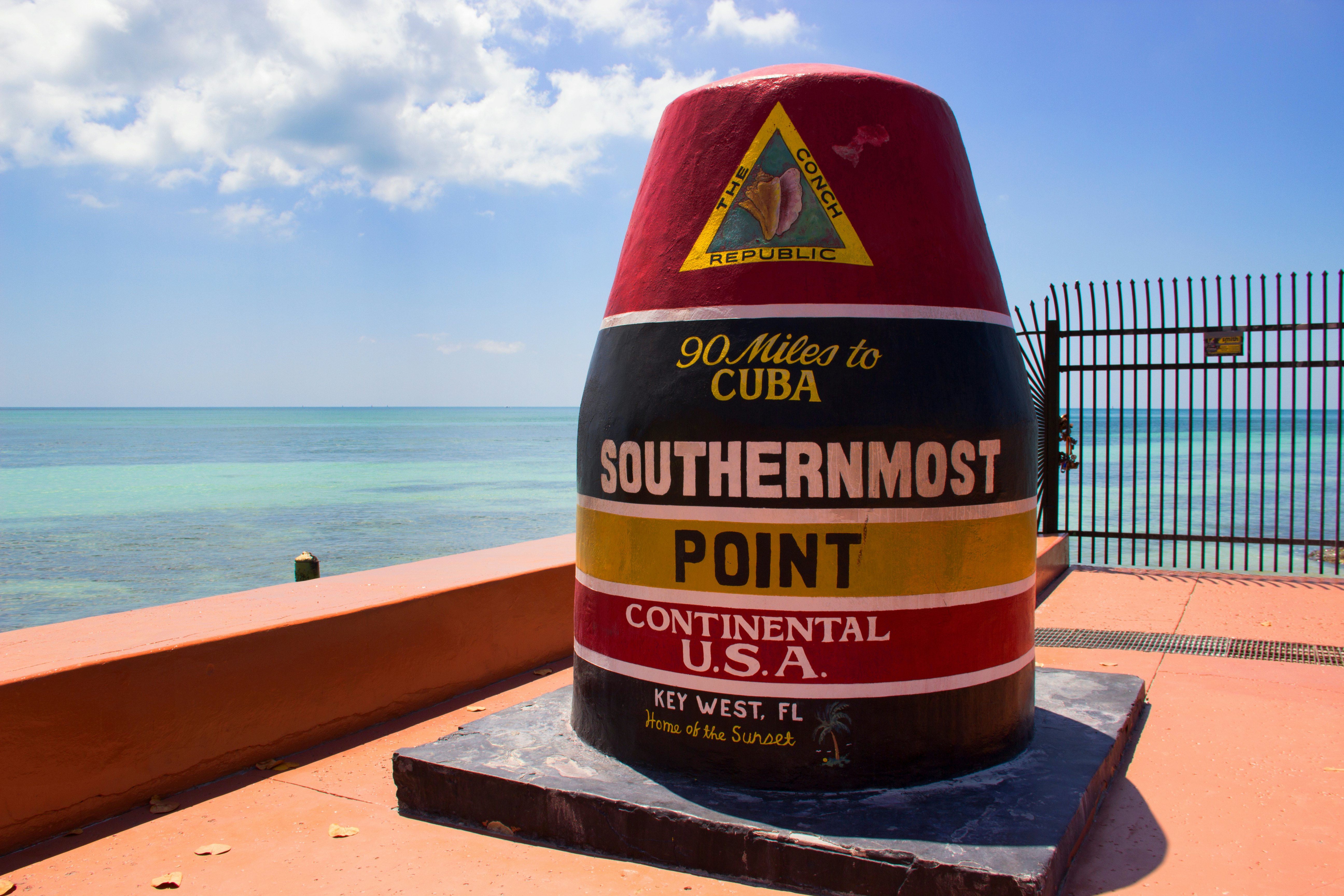
13. Snap a selfie at Mile Marker 0 and the Southernmost Point
Welcome to the end of the road. Literally. Mile Marker 0 on US Highway 1 marks the southern terminus of the East Coast’s longest route, and no visit to Key West is complete without a photo here.
A few blocks away, the iconic Southernmost Point Buoy is another selfie stop, just be prepared to wait your turn in line.
Detour: Skip the crowds and snag a photo in front of the colorful “Greetings from Key West” mural at 284 Margaret Street.
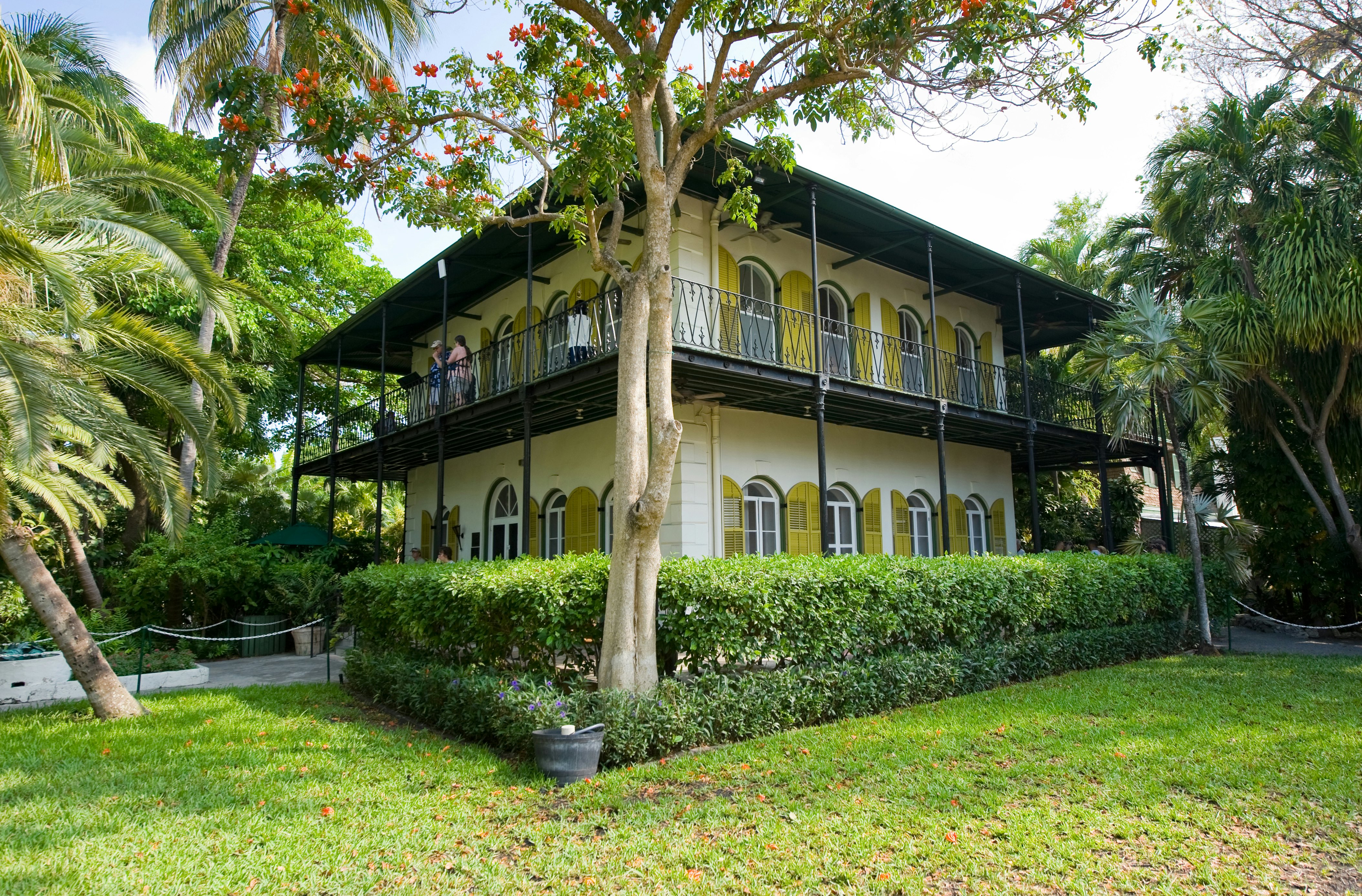
14. Meet the cats at Hemingway House
Sure, Ernest Hemingway’s prose was legendary, but his polydactyl cats might be the real stars of his old Key West home. More than 60 cats roam the Spanish Colonial grounds, about half of them six-toed, all said to be descendants of Hemingway’s original feline companion.
Guided tours highlight the writer’s quirky life, from poolside penny-throwing to his famously messy writing habits.
Planning tip: Don’t miss the coin embedded in the pool deck. And, yes, there’s a Hemingway Cats app to help ID the furry residents.
15. Celebrate the sunset at Mallory Square
At day’s end, everyone in Key West heads to the water. Mallory Square’s nightly Sunset Celebration isn’t just a great view but an open-air carnival of fire breathers, tightrope-walking dogs, and fortune tellers.
Locals and tourists alike gather for conch fritters, cocktails, and the sky's ever-technicolor finale.
Detour: Afterward, head into Old Town and begin your informal Duval Street crawl or book a tour. The island’s legendary bar-hopping stretch includes icons like Sloppy Joe’s and Hog’s Breath Saloon.
16. Venture westward to Dry Tortugas National Park
If you want to say you’ve truly gone the distance, catch a ferry or seaplane from Key West to Dry Tortugas National Park.
The 19th-century Fort Jefferson looms large on this remote island outpost, surrounded by crystal-clear waters ideal for snorkeling. Only 1% of the park is above water, with the rest being vibrant marine wilderness.
Planning tip: Book your ferry (via the park’s website) or seaplane ride months in advance. Seats are limited and demand is high.










